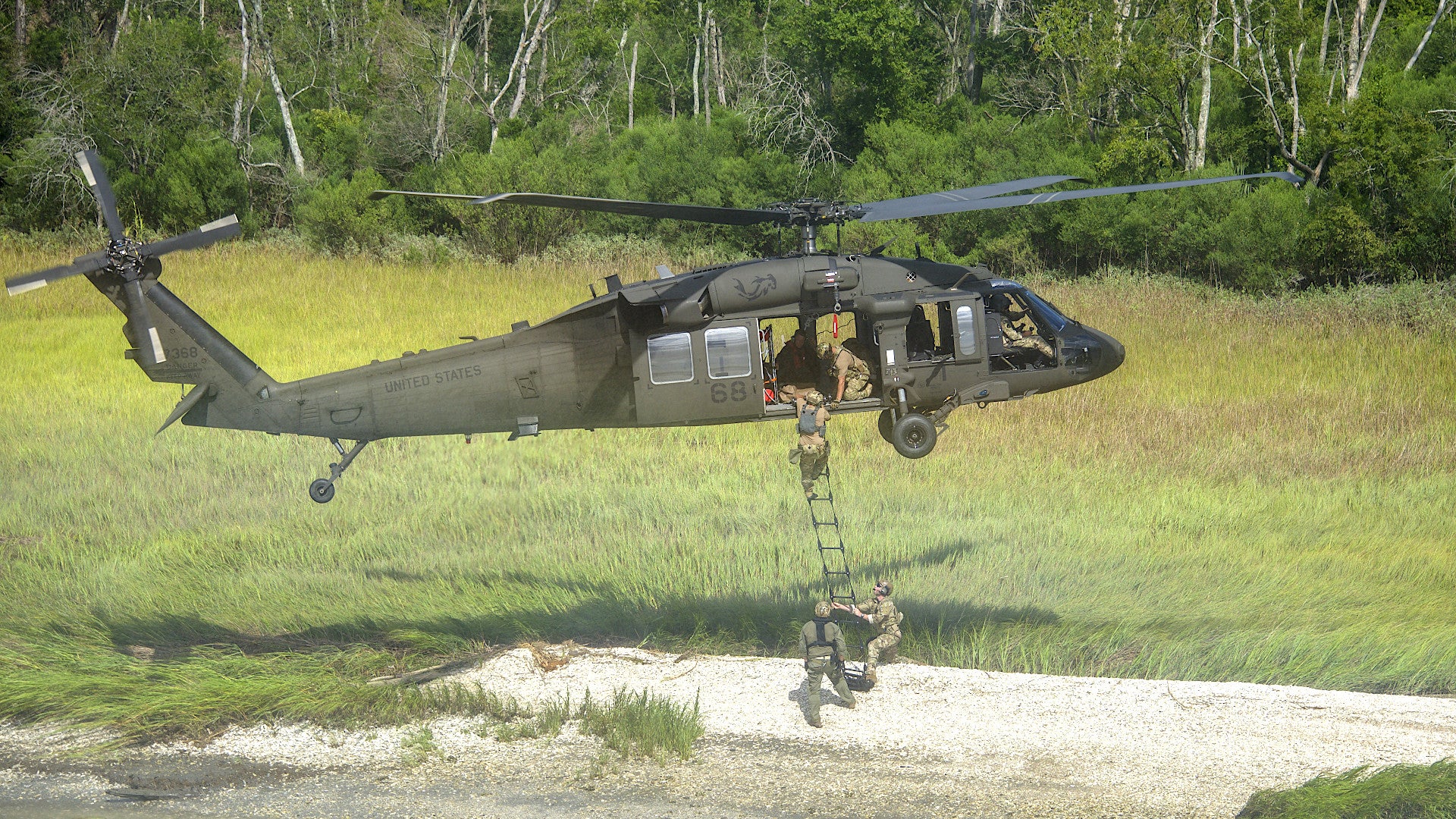Regular readers of The War Zone may remember a pair of stories from last year regarding what appeared to be domestic training exercises involving the Federal Bureau of Investigation’s elite Hostage Rescue Team, or HRT, and their UH-60M Black Hawk helicopters. Now the FBI has offered its own inside look at another such exercise in South Carolina that included the Black Hawks. This confirms our earlier assessment that those helicopters belonged to the Bureau and offers a closer look at their exact configuration.
Members of HRT and other FBI agents, including trainees, together with elements from the South Carolina National Guard and no less than 10 other state and local agencies, conducted the exercise in Charleston between Aug. 5 and 7, 2019. The SeaHawk Interagency Operations Center, which the Department of Homeland Security and Department of Justice run together as part of managing security at the Port of Charleston, also participated. At least three UH-60Ms from HRT’s Tactical Helicopter Unit, along with two of the Bureau’s Special Operations Craft-Riverine (SOC-R) boats, which you can read about in more detail here, helped move personnel around the littoral areas in and around the coastal city.
“The goal was to build a realistic scenario to exercise a range of techniques,” an unnamed special agent from the FBI’s field office in South Carolina’s capital Colombia said in an official interview. “The local agencies gain a better understanding of the FBI’s capabilities and special equipment. The HRT trainees see how incredibly important it is to seek out the local expertise and collaborate with regional and state partners.”
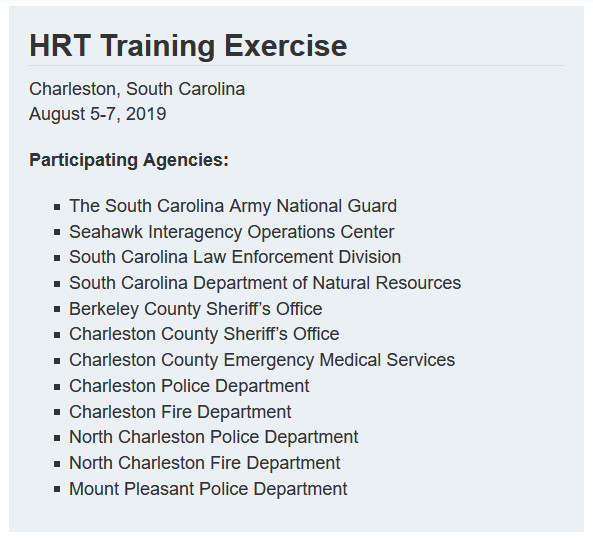
The exercise scenario involved reports that an individual, belonging to a fictitious domestic militia group, had thrown a bag off Ravenel Bridge, a span that crosses Copper River and Drum Island linking Charleston with the suburb of Mt. Pleasant to the northeast. The FBI and its local partners spent three days gathering mock evidence, conducting a simulated manhunt, and defusing various surrogate improvised explosive devices, including a vest strapped to an individual playing the role of a hostage.
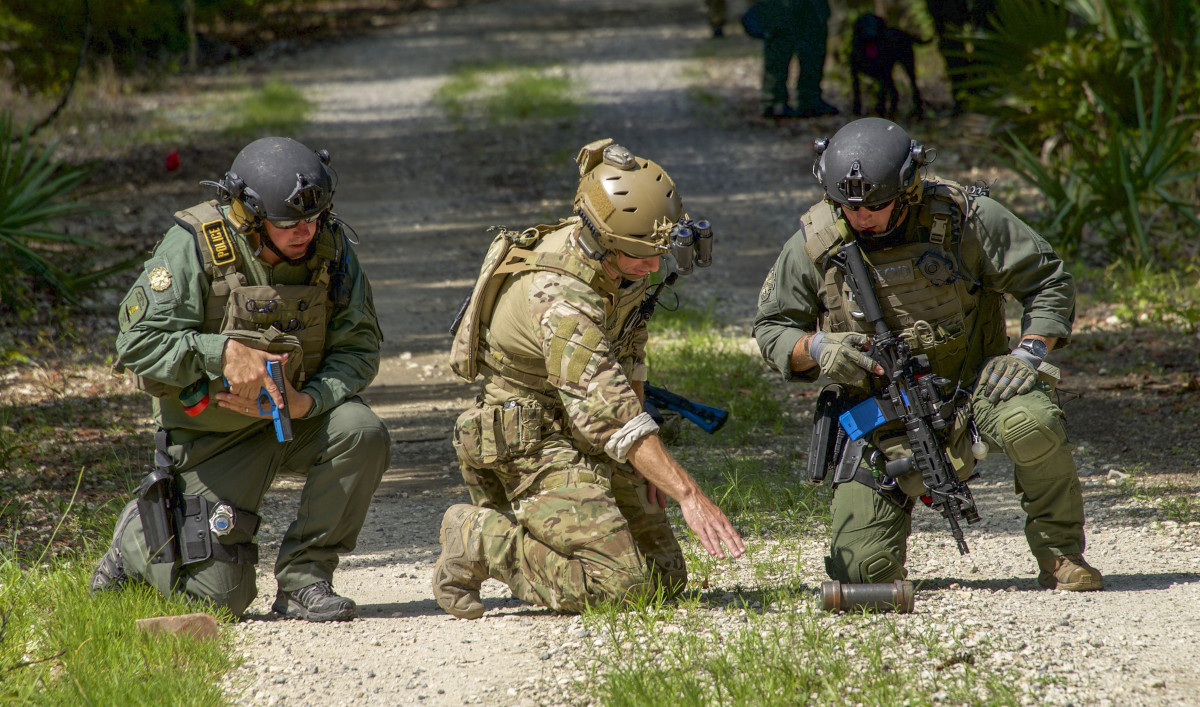
During the exercise, HRT’s UH-60Ms inserted personnel into hard to reach areas via fast ropes and extracted them using rope ladders. One of the helicopters used its hoist to conduct at least two mock rescue operations, retrieving “injured” individuals from a boat belonging to the North Charleston Fire Department and one of the FBI’s SOC-Rs.
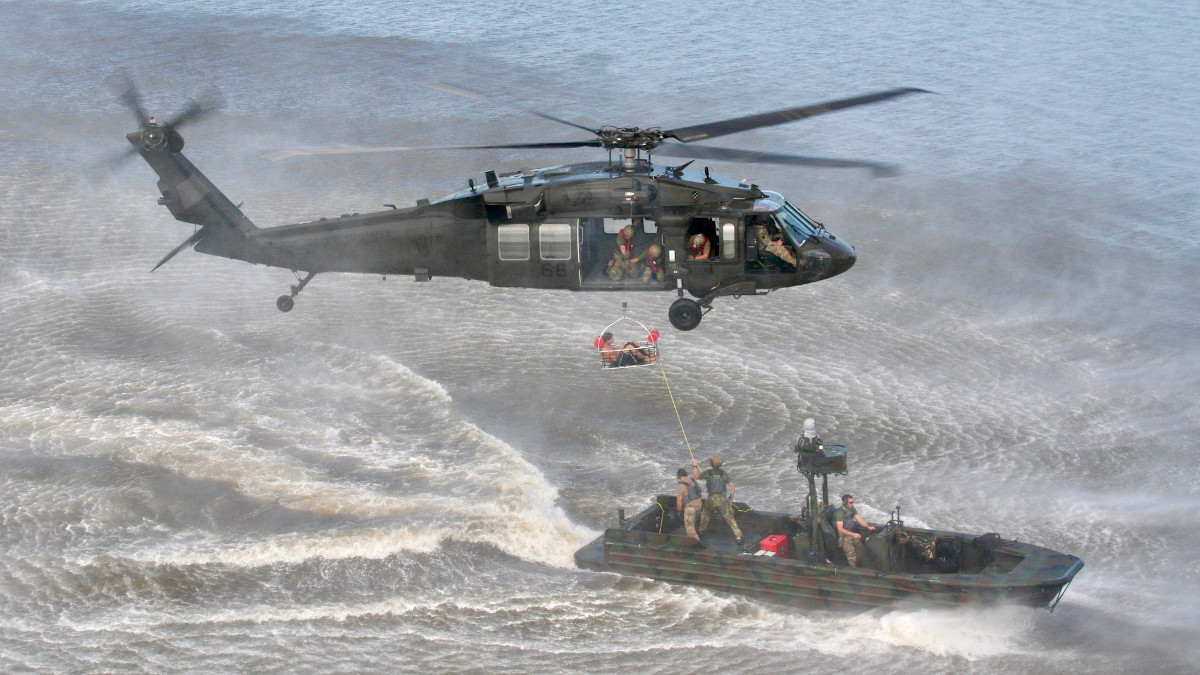
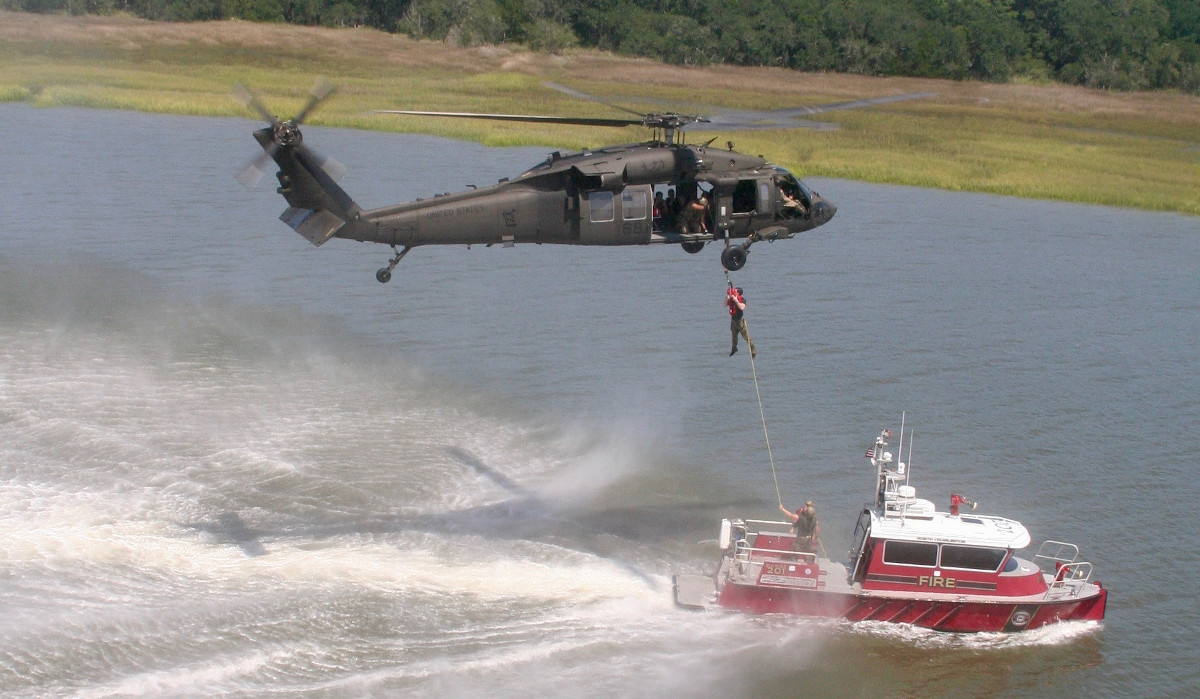
HRT has been operating various helicopters since its inception in 1983, including Bell 407s and 412EPs and MD 500-series Little Birds. Starting in 2009, HRT began acquiring new UH-60Ms via U.S. Army contracts and reportedly now has six of them in total. Since then, the Army has also begun to divest earlier model UH-60s to other U.S. government agencies and foreign partners through its Black Hawk Exchange and Sales Team (BEST) program. The Department of Justice has received some of these second-hand Black Hawks, but it is unclear if they have gone to the FBI or other agencies.
While the FBI’s Black Hawks might have the same overall green paint job, the photos the Bureau released from the exercise show that their helicopters have some distinct features, including the hoist, compared to their standard Army cousins. It is also clear that they are dead ringers for unknown helicopters seen flying around Chicago in September 2018 and in and around the Port of Miami in December of that year, right down to the simple “United States” marking on the tail.
The FBI Black Hawks notably have two satellite communications antennas on the roof, which one typically does not see on standard Army examples. One of the UH-60Ms present during the exercise in Charleston had a pair AV 2091 “Eggbeater” or “O Wing” UHF SATCOM antennas, though the FBI Black Hawks seen in Chicago and Miami had X-shaped UHF SATCOM antennas.
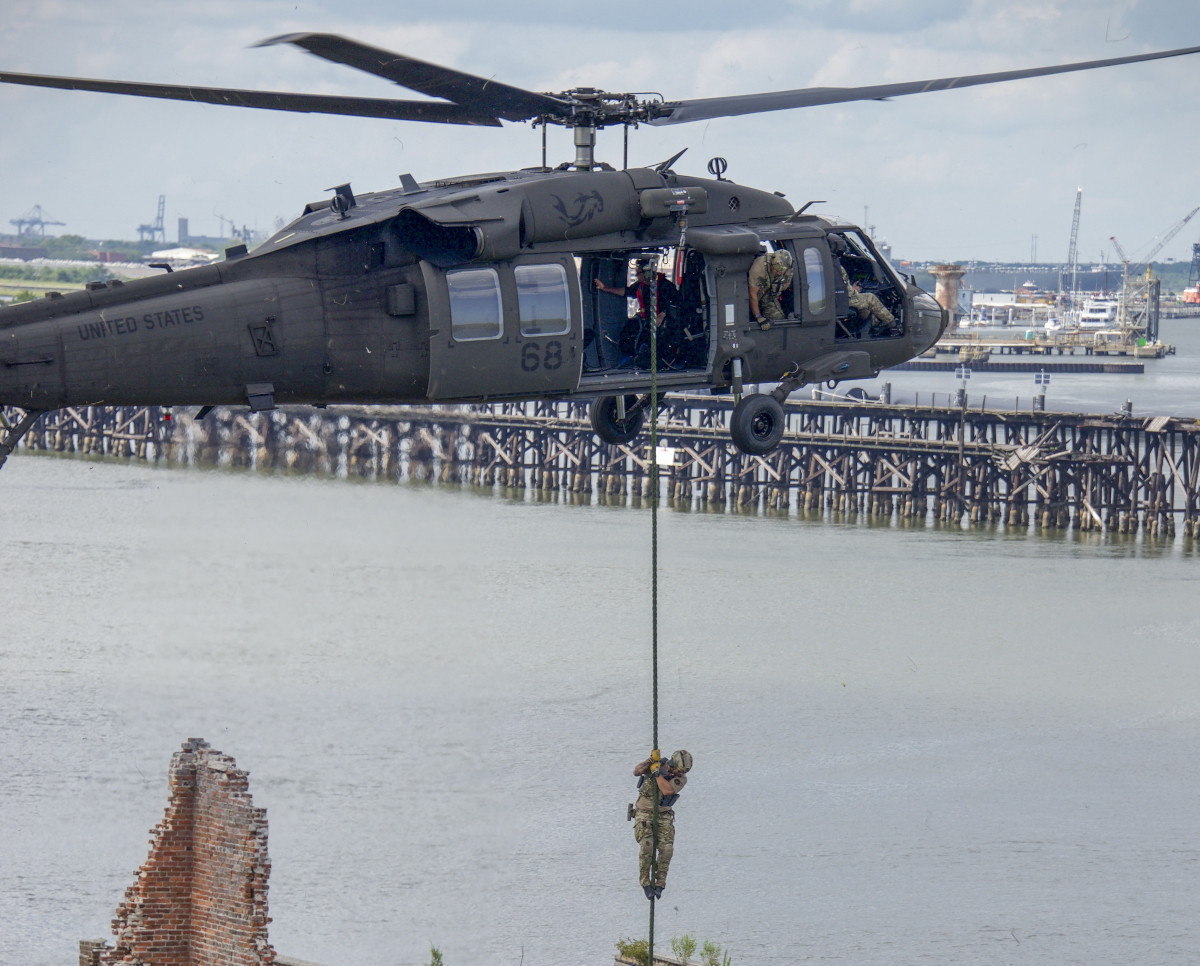
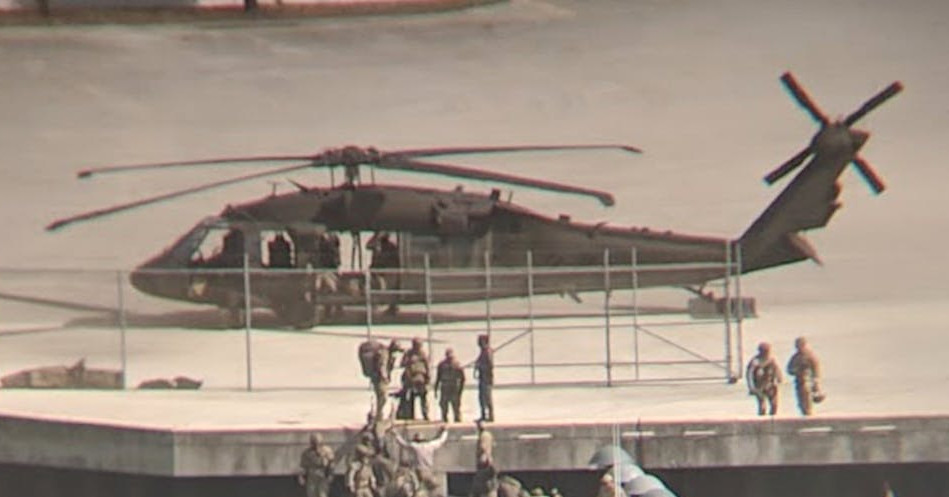
These are in addition to multiple blade-style aerials that are also typically associated with communications systems on top and underneath the fuselage, which are more reminiscent of what one might expect to see on Army UH-60s. The extensive communications suite may reflect the FBI’s expectation that HRT will be operating in environments with various different actors, including civilian first responders and members of the U.S. military, who may all have their own networks, and will need to be able to readily connect with all of them. The sheer number of different agencies involved in this one exercise in South Carolina certainly underscores this reality.
Interestingly, as with Army Black Hawks, the FBI UH-60Ms have the mounts on the nose and tail for the AN/AAR-57 Common Missile Warning System’s (CMWS) electro-optical sensors, as well as a bracket on each side of the tail for countermeasures dispensers for decoy flares. When installed, the CMWS provides audio and visual warnings about incoming short-range infrared-homing missiles and a central control unit can be set to automatically employ countermeasures, such as flares.
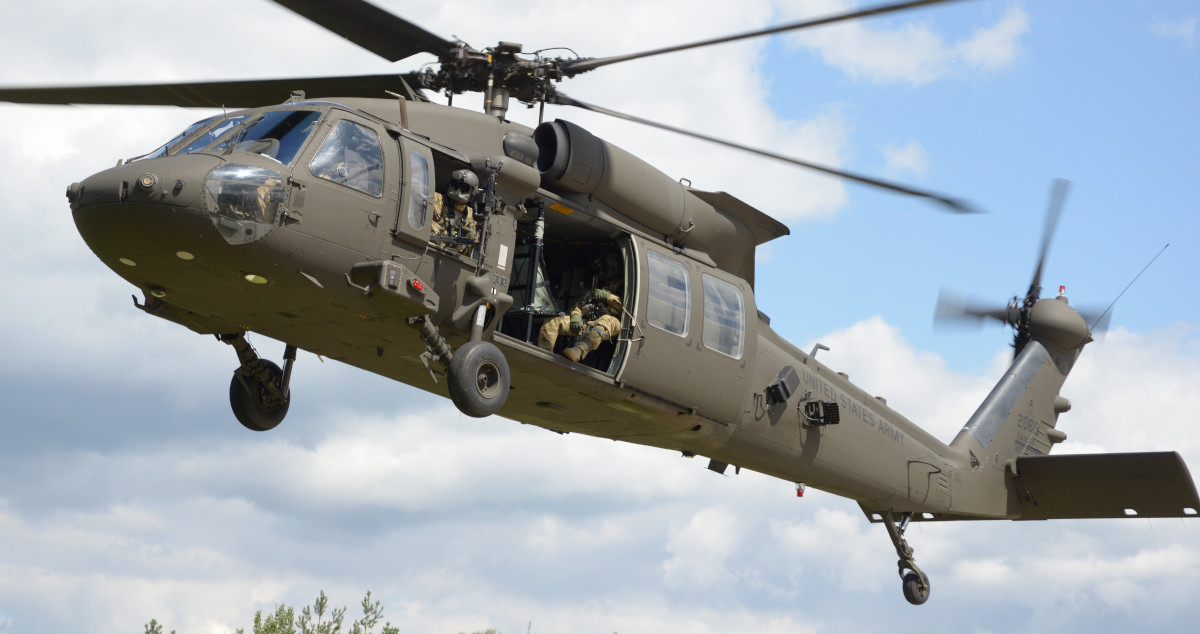
It is possible that these features were simply included on all of the UH-60Ms in the Army’s order, even the ones earmarked for the FBI. There’s no clear indication that HRT is necessarily worried about the threat from weapons such as shoulder-fired surface-to-air missiles, also known as man-portable air defense systems, or MANPADS, in a domestic context. That being said, in the past, the U.S. government has noted the potential danger MANPADS would pose, especially to airports, in the United States. In addition, HRT personnel do deploy overseas, including on joint operations with U.S. military special operators, and having the ability to install these defensive systems on its Black Hawks could allow it to deploy its own air support to higher threat environments, if necessary.
Beyond offering an opportunity to take a good look at the FBI’s Black Hawks, the exercise in South Carolina was also just another good example of the kind of hyper-realistic training activities that elite U.S. government agencies, including law enforcement groups such as HRT and military special operations forces, regularly engage in domestically. As The War Zone
has pointed out in our past coverage of these types of events, while dedicated training centers can support a wide variety of scenarios, they’re simply no substitute for real-world environments, especially when it comes to dense urban areas.
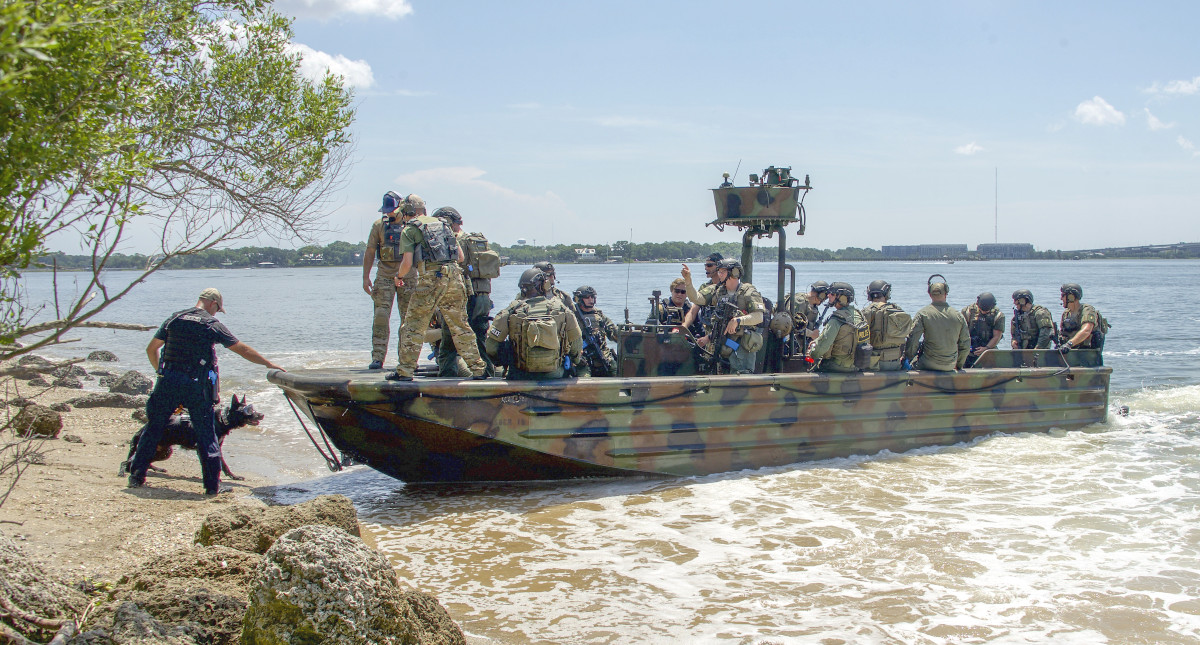
This is especially true when it comes to HRT, which is part of the FBI’s Critical Incident Response Group (CIRG). The group’s units are required to be on-call should any number of serious emergencies occur anywhere in the country, including in America’s largest cities. This includes traditional explosive ordnance disposal missions, as well as disarming or otherwise neutralizing weapons of mass destruction, including fully-fledged nuclear weapons and dirty bombs. As its name suggests, HRT is a premier hostage rescue unit, as well as one of the U.S. government’s top-tier domestic direct action counter-terrorism elements. CIRG is also responsible for a host of other functions, including intelligence gathering and dissemination, crisis negotiations and management, and helping with the response to any potential large scale catastrophe.
From every indication we’ve seen so far, the Black Hawks are definitely a key component of HRT’s ability to carry out these missions. With this in mind, if you look up and happen to see a largely unassuming green Black Hawk flying over your city in the future, you may be watching the FBI’s elite counter-terrorism unit conducting one of these valuable training exercises.
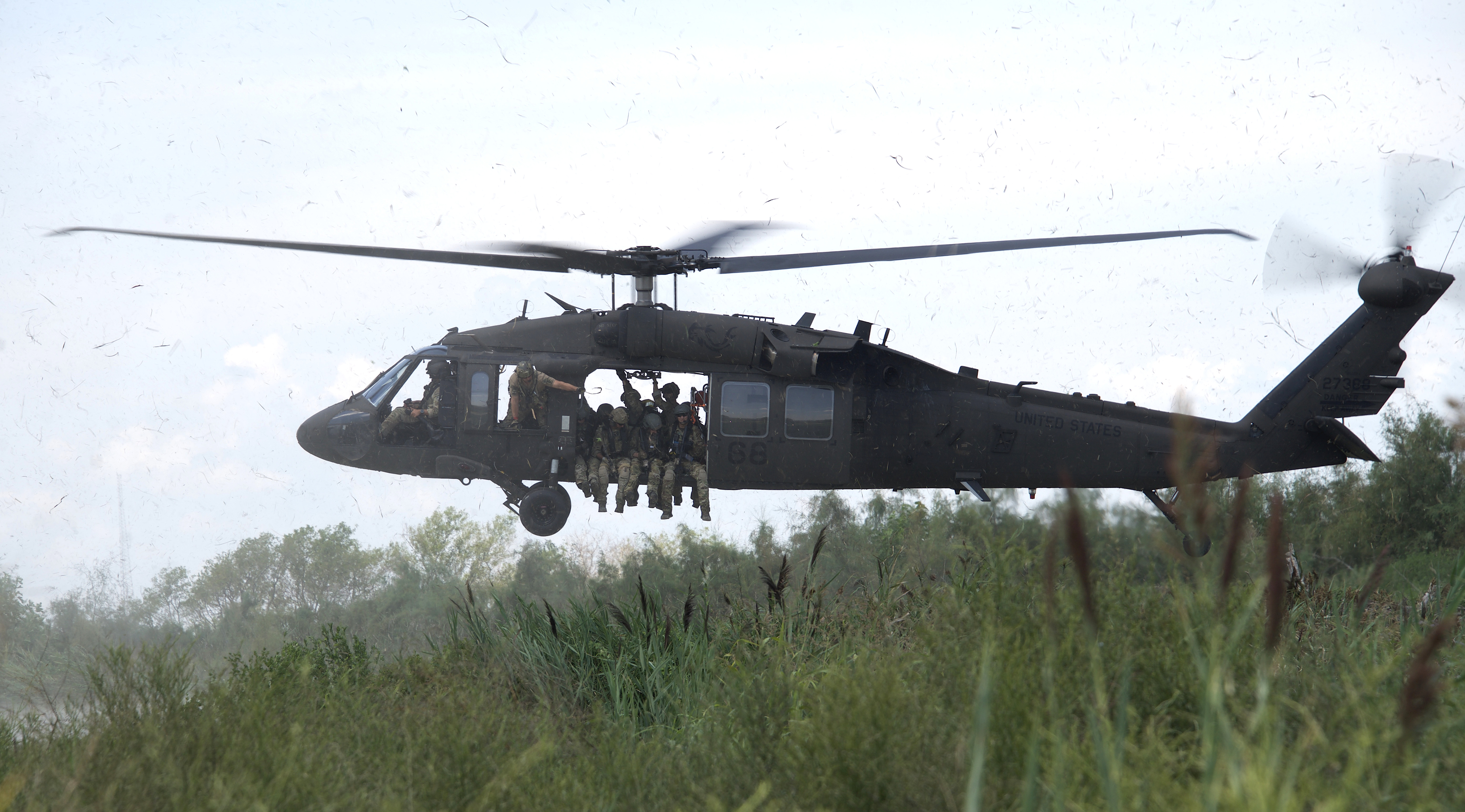
Contact the author: joe@thedrive.com
